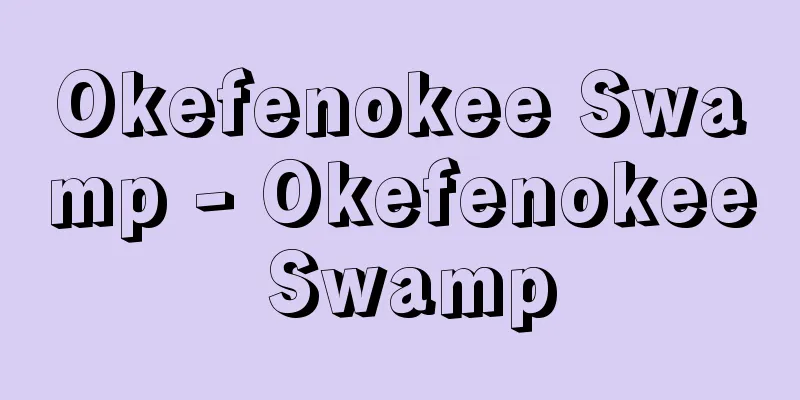American Indian Languages

|
The languages of the indigenous peoples of the Caribbean islands and the Americas, spoken before the arrival of European settlers. There is a great deal of diversity among the American Indian languages, so it is believed that their ancestors were groups who spoke different languages in Asia before migrating to the Americas. Thus, the American Indian languages are not considered to form a single language family with related relationships. However, there is a theory that the indigenous languages of the Americas, excluding Eskimo-Aleut and Na-Dene (Apache being one example), form a single language family. However, such a large family is still only a hypothesis. Estimates of the number of Native American languages vary from about 800 to 200 in North America, 350 in Central America, and 1,450 in South America, with some putting the total at about 2,000. It is estimated that when European settlers first arrived, there were between 1.5 and 5 times as many languages in North America as there are today. Others put the total number of languages in the world at about 5,000, with Native American languages accounting for 16% of that number. [Haruo Aoki] ClassificationThe classification distinguishes between "major language families," "language families," and "word groups." Major language families are groups of languages that are likely related, but this has not yet been proven, and include language families and language isolates. Word groups are subgroups of language families whose relatedness has not been sufficiently proven. Language families are groups of languages where a protolanguage has been reconstructed and kinship has been proven. The classification of North American languages is based on John W. Powell's 1891 attempt to classify languages north of Mexico into 55 families, which is still in use today with only minor revisions. By the 1920s, work had continued to group languages into larger families, and in 1929 Sapir proposed grouping North American languages into six groups: (1) Eskimo-Aleut, (2) Na-Dene, (3) Algonquin-Wau-Kya, (4) Aztec-Tanoa, (5) Penute, and (6) Ho-Kah Sioux. Later, it was proposed to move the languages of the Gulf of Mexico states of Mississippi, Alabama, Louisiana, and Florida from (6) to (3). (1) is a language family to which Eskimo and Aleutian languages of the Aleutian Islands belong. (2) is a large language family that includes the Athabascan family, which includes Apache and Navajo, as well as the isolated languages Tlingit (Alaska and Canada) and Haida (Queen Charlotte Islands). (3) is also a large language family. The Wocachia family includes the Nootka language of the west coast of Canada, the Algonquian family includes the Cree languages of Canada and Montana, and the Eurok and Weeyot languages of California. (4) is also a large language family that extends into Central America and includes the Aztec family, which includes Nahuatl, the common language of the Aztec Empire, and the Shoshone family, which spans from California to Idaho. (5) is a large language family stretching north from California, but its existence has recently been called into question. (6) Major language families include the Yuman family, which extends into Mexico, the Iroquoian family, which includes Mohawk, and the Siouan family, which includes Dakota. The following language groups are found in Central and South America: (7) Oto-Manguean Languages: A language group found only in Central America, including the extinct Manguean language family and the Otomian language family of Mexico. (8) Mayan languages These are languages spoken by people whose ancestors were the people who built the Mayan culture, and are spoken in parts of Mexico, Guatemala, Honduras, Belize, etc. The Quiche language of Guatemala belongs to this group. (9) Andean-Equatorial Languages: South America has the largest number of languages, about 200. Among them is Quechua, the former lingua franca of the Inca Empire, with 6 million speakers across Peru, Ecuador, Colombia, Bolivia, Chile, and Argentina. (10) Geographical-Caribbean Languages The languages in this group are spoken in a wide area east of the Andes, stretching from Venezuela in the north to Argentina in the south. (11) The Macro-Chibcha Family: Stretching from Central America to South America, it consists of nine languages and seven language families, including Kuna and Guaymi of Panama, and Páez of Colombia. Some European Americans have mistakenly believed that Indian languages are simple and primitive. However, for example, in Central America, there are languages with nouns for the word "aunt," where "aunt" can be singular, dual, or plural, and where "aunt" can be either first, second, or third person, and where "aunt" can be singular, dual, or plural, resulting in 3 x 3 x 3 = 27 possible forms. Verbs can also contain a lot of information, and many languages have complex structures. [Haruo Aoki] "In pursuit of dying languages" by Haruo Aoki (Sanseido Books)" ▽ "American Indians" by Haruo Aoki (Kodansha Gendai Shinsho)" ▽ "Languages of the world" edited by Hajime Kitamura (Language Lecture Series, Vol. 6, 1981, Taishukan Shoten)" [References] | |Source: Shogakukan Encyclopedia Nipponica About Encyclopedia Nipponica Information | Legend |
|
カリブ海の島々、および南北アメリカ両大陸で、ヨーロッパからの移住者が到着する以前から話されている先住の人々の言語。アメリカ・インディアンの諸言語の間には非常に多様な相違があるので、彼らの祖先は、アメリカ大陸に移動する以前のアジアですでに異なる言語を話していた諸集団が移住したものと考えられている。したがって、アメリカ・インディアン諸語が互いに親縁関係をもつ単一の語族を形成するとは考えられていない。しかし、エスキモー・アリュート諸語およびナデネ諸語(アパッチ語はその一例)を除く南北アメリカの土着語は、単一の語族を形成するという説はある。ただし、このように大きな語族は、まだ仮説でしかない。 アメリカ・インディアン諸言語の数は、約800とする者から、北アメリカ200、中央アメリカ350、南アメリカ1450、総計約2000とする者まで諸説がある。ヨーロッパからの移住民が初めに到着したときは、北アメリカを例にとると、現在の言語数の1.5倍ないし5倍の数の言語があったと推測されている。世界の言語総数を約5000とし、アメリカ・インディアンの諸言語はその16%であるとする者もいる。 [青木晴夫] 分類分類には「大語族」「語族」「語群」の区別が使用される。大語族は、同系である蓋然(がいぜん)性はあるが、その証明がまだなされていない言語集団で、語族や孤立言語を含む。語群は、同系である証明が十分でない語族の下位群である。語族は、祖語が再構され親族関係が証明された言語集団である。 北アメリカの言語分類は、1891年にパウエルJohn W. Powellが試みたメキシコ以北の諸言語を55語族に分類したものが、現在も多少改訂しただけで使われている。1920年代までには、語族をさらに大きな大語族にまとめる研究が続けられ、1929年にサピアは、北アメリカの言語を次のような六つの集団にまとめることを提案した。(1)エスキモー・アリュート、(2)ナデネ、(3)アルゴンキン・ウォキャシ、(4)アズテク・タノア、(5)ペヌート、(6)ホカ・スー。その後、メキシコ湾岸のミシシッピ、アラバマ、ルイジアナ、フロリダ各州の言語を(6)から(3)へ移す提案がなされている。 (1)は語族で、エスキモー語とアリューシャン列島のアリュート語がこれに属する。 (2)は大語族で、アパッチ語やナバホ語を含むアサバスカ語族と、孤立しているトリンギト語(アラスカとカナダ)およびハイダ語(クイーン・シャーロット島)がこれに属する。 (3)も大語族である。カナダ西岸のヌートカ語の属するウォキャシ語族、カナダやモンタナ州のクリー語群の属するアルゴンキアン語族、カリフォルニアのユーロク語、ウィーヨト語などがこれに属する。 (4)も大語族で、中央アメリカにまで広がっており、アステカ王国の共通語であったナワ語を含むアズテク語族、カリフォルニアからアイダホにかけてのショショーニ語族などがこれに属する。 (5)はカリフォルニアから北に延びている大語族であるが、最近その実在が疑われている。 (6)の大語族には、メキシコに延びているユマ語族、モホーク語を含むイロコイ語族、ダコタ語を含むスー語族などがある。 中央アメリカおよび南アメリカには次のような言語集団がある。 (7)オト・マンゲ大語族 中央アメリカだけに広がる言語集団で、死語となったマンゲ語族、メキシコのオトミ語族などがこれに属する。 (8)マヤ語族 マヤ文化を築いた人々を祖先とする人たちの言語で、メキシコの一部、グアテマラ、ホンジュラス、ベリーズなどで話される。グアテマラのキチェ語などがこれに属する。 (9)アンデス・赤道大語族 南アメリカで言語数がもっとも多く、約200ある。このなかには、ペルー、エクアドル、コロンビア、ボリビア、チリ、アルゼンチンにわたって600万の話者を有する、かつてのインカ帝国の共通語であったケチュア語がある。 (10)ジェ・パノ・カリブ大語族群 このグループに属する言語は、アンデス山脈以東、北はベネズエラから南はアルゼンチンまでの広い地域で話されている。 (11)マクロ・チブチャ大語族 中央アメリカから南アメリカにかけて広がっており、九つの言語と七つの語族からなる。パナマのクナ語、グワイミ語、コロンビアのパエス語などがこれに属する。 ヨーロッパ系のアメリカ人には、インディアン諸語は簡単で原始的だと誤解した者もいた。しかし、名詞に例をとると、中央アメリカには「おば」(伯母・叔母)という意味の単語に、「甲のおば」というときの甲が単数か双数か複数か、一人称か二人称か三人称か、さらにおばさんが単数、双数、複数のいずれかで、3×3×3=27の形を有する言語がある。動詞にも多くの情報を組み込むことができ、複雑な構造の言語が多い。 [青木晴夫] 『青木晴夫著『滅びゆくことばを追って』(三省堂ブックス)』▽『青木晴夫著『アメリカ・インディアン』(講談社現代新書)』▽『北村甫編『世界の言語』(『講座言語 第6巻』1981・大修館書店)』 [参照項目] | |出典 小学館 日本大百科全書(ニッポニカ)日本大百科全書(ニッポニカ)について 情報 | 凡例 |
<<: American quail - American quail
>>: American Rock Clover - American Rock Clover
Recommend
Foggia - Foggia (English spelling)
The capital of Foggia Province in Puglia, souther...
Ambler - Eric Ambler
British spy novelist. Along with Somerset Maugham...
Eigenvalue - Koyuuchi (English spelling) eigenvalue
For an n-th order square matrix A=(a ij ) whose e...
Dahlmann, Friedrich Christoph
Born: May 13, 1785, Wismar Died December 5, 1860. ...
Kant Karnatakalesko - Kant Karnatakalesko
...Considering how successful the Italians were i...
Obrenović Dynasty - Obrenović
…A republic located almost in the center of the B...
Anti-dumping Code
… [Yamazawa Ippei] [GATT Restrictions] Anti-dumpi...
Akakikurage - Red Jellyfish
...The closely related A. polytricha (Mont.) Sacc...
Kineya Yasaburo (first generation)
…It was first performed by the first Nakamura Tom...
《Kasari Nato》 - No decoration
After Basho's death, in order to overcome the...
Ojojigahara
...Since around 1956, cultivation of rice fields ...
Biwahagoromo (Biwa feather robe) - Biwahagoromo
A general term for insects in the Hemiptera order,...
Polotsk (English spelling)
A city in the Vitebsk Oblast in northern Belarus. ...
Kensho - Kensho
Date of birth and death unknown. A poet and schol...
Museo Chiaramonti (English name)
...(1) Pio-Clementino Museum: A large collection ...









